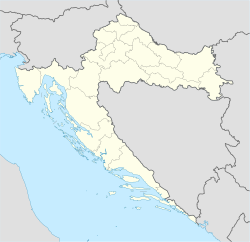설계속도
Design speed이 글의 사례와 관점은 주로 미국을 다루며, 주제에 대한 세계적인 관점을 나타내지 않는다. (2010년 12월)(이과 시기 |
설계속도는 도로설계시 새로운 도로의 기하학적 특징을 파악하는 데 사용되는 도구다. 이 단어의 함축과는 반대로, 도로의 설계 속도가 반드시 최대 안전 속도일 필요는 없다. 즉, 더 높거나 낮을 수 있다.
기하학적 형상
고속도로에서 선택한 설계 속도는 편경사율과 곡선 반지름, 시거리, 파고 및 처진 수직 곡선의 길이를 선택하는 주요 요인이다. 이동 속도가 더 빠른 도로에는 넓은 곡선, 가파른 곡선 은행, 가시거리 및 완만한 언덕마루와 계곡이 필요하다. 저속도로는 커브가 더 날카롭고, 뱅킹이 덜하며, 가시거리가 적고, 언덕마루와 계곡이 더 날카로워질 수 있다.
설계 속도와의 속도 제한 분산
도로의 설계 속도는 초기 속도 제한을 결정하기 위해 가끔 사용되지만, 다음과 같은 이유로 자동차를 운전할 수 있는 최대 속도에 대한 불완전한 측정이다.
- 도로를 건설하기도 전에 만들어진 이론적 또는 실험실 측정일 뿐이다.
- 설계 속도가 반드시 도로의 최대 안전 속도는 아니다. 고속도로 설계는 안전의 중요한 요소를 포함하고 있기 때문에, 운전자들은 좋은 날씨 조건이 있을 때 어렵지 않게 설계 속도보다 더 빠르게 이동할 수 있다.[1]
- 도로나 구간에서 가장 높은 설계 속도는 가장 불리한 부분의 설계 속도다. 예를 들어, 설계 속도가 45mph인 곡선을 제외하고 설계 속도가 60mph인 도로 세그먼트를 고려할 때 전체 세그먼트의 설계 속도는 45mph가 될 것이다. 실제로 이 도로는 커브길에서 45mph의 권고속도와 다른 곳에서는 더 높은 안전운행속도를 가질 수 있다.
- 설계 속도는 입법화된 제한 속도보다 높을 수 있으므로 일부 도로의 설계 속도에는 서명하는 것이 합법적이지 않다.[2][3]
- 설계속도가 결정되기 전 또는 그 이전에 존재했던 차량과 도로의 기능을 바탕으로 한다. 자동차와 도로 기술은 일반적으로 시간이 지남에 따라 향상된다. 따라서, 도로의 원래 설계 속도가 결정되었을 때부터 시간이 경과함에 따라, 설계 속도가 최대 안전 속도를 과소평가할 가능성이 높아지고 있다.
설계 속도의 제한 속도 결정,"운영 속도와 심지어 속도 제한 설계 속도보다 훨씬 반드시 안전을 훼손하지 않고 비쌀 수 있습니다 기록했다"[4]과 "임의의 지점 위치 낮은 잡음 설계 속도로 낮은 속도 제한을 설정하는 것을 좋지도 않engin 효과적이다에 활용하는 한계를 인식하는 것.eer연습하고 있다.[5]
진화
디자인 속도의 개념은 진화하고 있다. 1994년판 AASHTO 그린북의 정의는 "고속도로의 설계 특징이 좌우할 정도로 여건이 좋을 때 특정 구간에서 유지될 수 있는 최대 안전속도"였다.[6] 가정된 설계 속도는 지형, 인접 토지 이용 및 고속도로 기능 분류와 관련하여 논리적이어야 한다." 대부분의 미국 주들은 이 정의를 사용했다.[7] 2004년에 첫 번째 문장은 "도로의 다양한 기하학적 설계 특징을 결정하는 데 사용되는 선택된 속도"[8]로 변경되었다. 이는 최소한의 설계 속도를 충족시키는 것만으로는 안전한 도로를 보장할 수 없다는 사실을 반영한다.
최근에는 최소 설계 속도 대신 설계 일관성의 개념이 사용되고 있다. 이는 차도에 대한 운전자의 기대를 도로 설계와 연결시키려 한다. 그것은 운전자의 행동 모델을 사용하여 고속도로 구간의 차량 속도를 예측하고 인접 구간의 예측 속도를 비교한다. 한 구간에서 다음 구간으로의 상당한 속도 감소는 운전자들이 도로 조건에 따라 너무 빨리 운전하게 될 수 있는 위치로 플래그 지정된다.[9]
도시와 교외 거리의 설계 속도에 관한 철학계의 큰 변화도 일어나고 있다. 고속도로 기술자들은 도로의 현재 속도를 측정하여 다음 배수인 시속 5마일로 반올림하고 안전하다고 가정하여 그 속도에 맞게 도로를 설계할 것이다. 최근의 연구와[10] 디자인 관행은[11] 운전자들이 동네에 맞는 속도를 선택하도록 영향을 주기 위해 거리 디자인을 사용하는 데 초점을 맞추고 있다. 이 속도는 "목표 속도"라고 불렸으며, 이상적으로는 제한속도와 같다.[12]
요인들
도로를 계획할 때, 선택된 설계 속도는 다음을 포함한 몇 가지 요인에 기초하거나 영향을 미칠 수 있다.
참고 항목
참조
- ^ Design Speed, Operating Speed, and Posted Speed Practices (Report 504) (PDF) (Report). National Cooperative Highway Research Program.
Because of differences in design and operation criteria, there are locations where the posted speed limit based on an 85th percentile speed exceeds the roadway's design speed. This situation is because criteria used in highway design incorporate a significant factor of safety. Consequently, it is not surprising that motorists feel comfortable traveling at speeds greater than the roadway's design speed during good weather conditions. ... Although it is obvious that the "maximum" safe speed can be exceeded without difficulty on vertical and horizontal curves when good weather conditions are present, it is difficult to convince the general public that a roadway's design speed can be exceeded with safety.
- ^ [1][데드링크]
- ^ "CRITERIA FOR HIGH DESIGN SPEED FACILITIES" (PDF). Tti.tasmu.edu. Retrieved 9 November 2021.
- ^ "Design Speed, Operating Speed, and Posted Speed Practices (Report 504)" (PDF). National Cooperative Highway Research Program.
A significant concern with the 1954 design speed concept was the language of the definition and its relationship with operational speed measures. The term "maximum safe speed" is used in the definition, and it was recognized that operating speeds and even posted speed limits can be higher than design speeds without necessarily compromising safety. In 1997, Fambro et al. (15) recommended a revised definition of design speed for the Green Book while maintaining the five provisions noted above. The definition recommended was, "The design speed is a selected speed used to determine the various geometric design features of the roadway." The term "safe" was removed in order to avoid the perception that speeds greater than the design speed were "unsafe". The AASHTO Task Force on Geometric Design voted in November 1998 to adopt this definition and it was included in the 2001 Green Book (17).
- ^ Design Speed, Operating Speed, and Posted Speed Practices (Report 504) (PDF) (Report). National Cooperative Highway Research Program.
Arbitrarily setting lower speed limits at point locations due to a lower inferred design speed is neither effective nor good engineering practice.
- ^ A Policy on Geometric Design of Highways and Streets: 1994. American Association of State Highway and Transportation Officials. 1995. ISBN 1-56051-068-4.
- ^ "Design Speed, Operating Speed, and Posted Speed Practices (Report 504)" (PDF). National Cooperative Highway Research Program.
- ^ A Policy on Geometric Design of Highways and Streets: 2004. American Association of State Highway and Transportation Officials. 2004. ISBN 1-56051-263-6.
- ^ Evaluation of Design Consistency Methods for Two-Lane Rural Highways, Executive Summary (PDF). Federal Highway Administration. August 2000.
- ^ Designing Roads that Guide Drivers to Choose Safer Speeds (PDF). Connecticut Cooperative Highway Research Program. 2009.
- ^ New York State Highway Design Manual Chapter 25: Traffic Calming (PDF). New York State Department of Transportation. 1999.
- ^ "Saint Louis Great Streets Initiative". Greatstreets-stl.org. Retrieved 2013-08-29.


